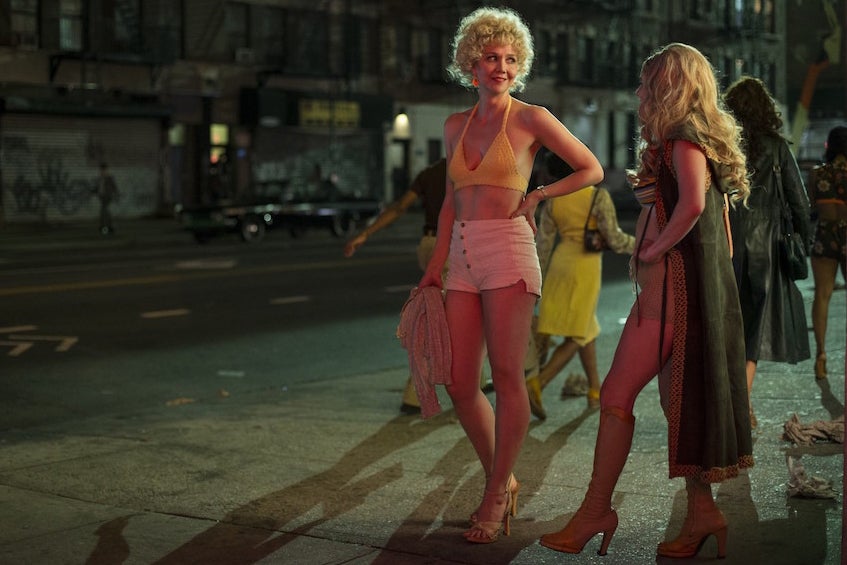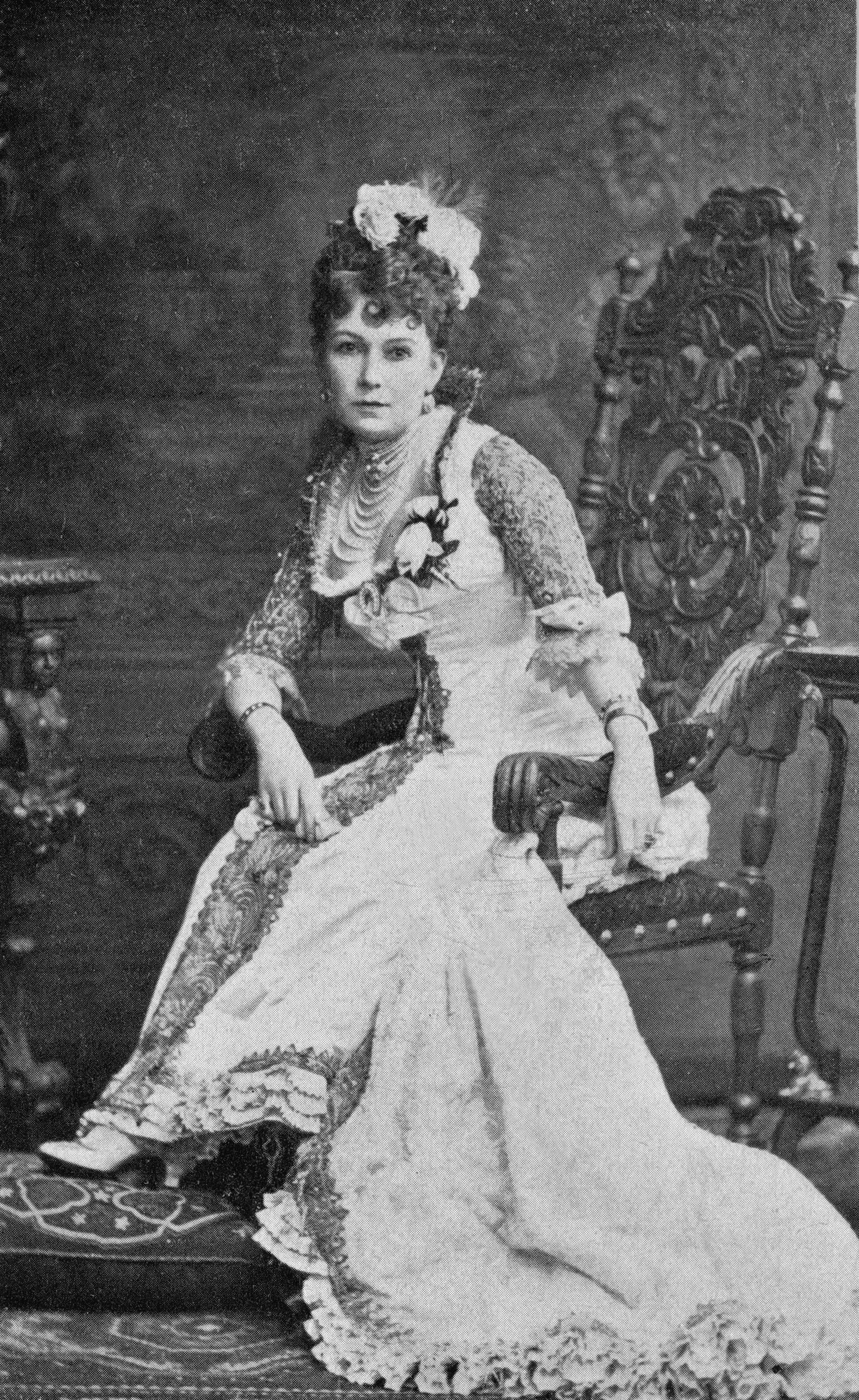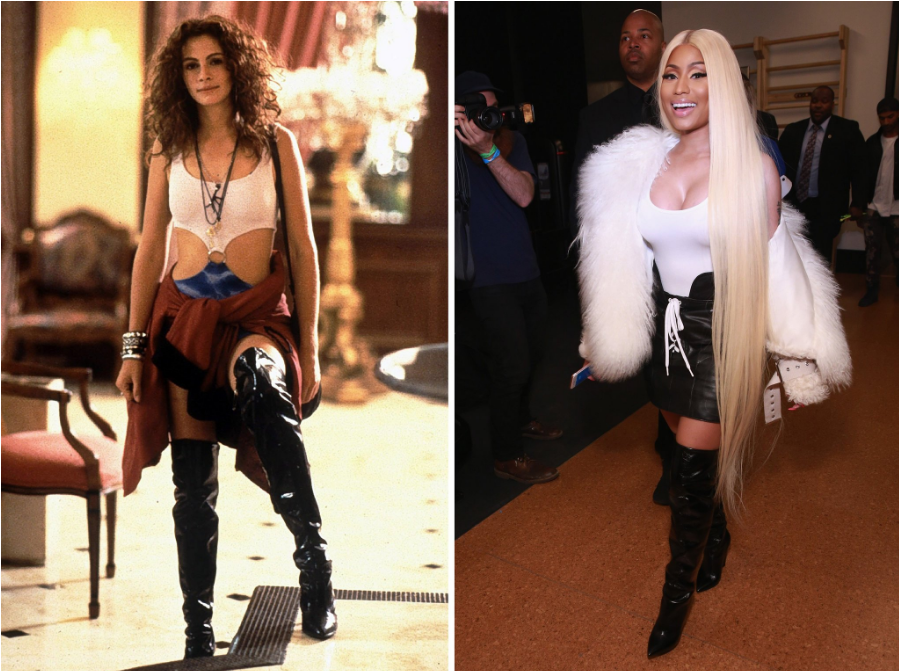Sex worker chic: how fashion borrows from prostitution
From fishnets to latex to leather, the clothes we wear, or might like to wear, owe a very real debt to the world’s most ancient profession

Your support helps us to tell the story
From reproductive rights to climate change to Big Tech, The Independent is on the ground when the story is developing. Whether it's investigating the financials of Elon Musk's pro-Trump PAC or producing our latest documentary, 'The A Word', which shines a light on the American women fighting for reproductive rights, we know how important it is to parse out the facts from the messaging.
At such a critical moment in US history, we need reporters on the ground. Your donation allows us to keep sending journalists to speak to both sides of the story.
The Independent is trusted by Americans across the entire political spectrum. And unlike many other quality news outlets, we choose not to lock Americans out of our reporting and analysis with paywalls. We believe quality journalism should be available to everyone, paid for by those who can afford it.
Your support makes all the difference.In a recent episode of Curb Your Enthusiasm, the show’s star and creator, Larry David, casts an appraising eye on Paula, who is turned out in the standard-issue trappings of her trade.
“Why this outfit?” David asks benignly. “Why not be wholesome?”
Business might pick up, he suggests, if only Paula, who is sheathed in a merry widow and mesh hose, would trade up, swapping the drag for something more discreet. Paula considers, announcing brightly after a beat, “OK, animal prints gone. Fishnets out of here. I think I can do this.”
The scene is ripe with irony: Paula may be about to cast off her working-girl uniform, but plenty of civilians – Beverly Hills matrons and their law-abiding like – would happily do the reverse, trading their uptight luncheon suits for latex and leather, all in the service of style.
They won’t have to search far for a role model.
That look is dated, for sure, bearing little resemblance to what many prostitutes actually wear, but those images have proliferated just the same, a common sight this fall at concerts, on theatre screens and in a flurry of luxury ad campaigns.

Seedily costumed streetwalkers are a magnet to fans of The Deuce, a TV show about 1970s-era Times Square and the rise of its infant pornography industry. A leather-clad vixen grinds her stilettos into a fleshy male torso in one of the Steven Klein videos on display this month in Fetish, an exhibition organized in partnership with Visionaire magazine at the venerable Sotheby’s auction house. And a manga-inspired old-school prostitute, resplendent in shrill fuchsia fur, is among the vivid attractions of Blade Runner 2049.
The very prevalence of such images, overworked as they may be, is a testament to their durability. It is reason enough to look more closely at a position advanced by scholars and style arbiters alike: that the clothes we wear, or might like to wear, owe a very real debt to the world’s most ancient profession.
“Fashion right now is influenced by hookers,” said Anna Terrazas, costume designer of The Deuce. “It’s not the other way around.” In a sea of eye-numbing conventionality, a maverick appearance is their signature. For someone employed on the busy streets, Terrazas said, “the point is to be seen.”
Not a groundbreaking concept, exactly. “There is an untold history of the relationship between sex workers and fashion,” said Rebecca Arnold, a fashion historian and lecturer at the Courtauld Institute of Art in London. As fashion’s early adopters, working women routinely took up what their respectable contemporaries shunned as too showy, tasteless or new.
“The dubious woman could be more outlandish in her dress, and more experimental,” Arnold said. “She is allied with the idea of fashion as linked, not necessarily with the avant-garde, but with the beginning of new dress trends.”
Among the more fashionably progressive were the grandes horizontales of the 19th century, courtesans like Cora Pearl, a client of Charles Worth, the era’s first celebrity designer; and Catherine Walters (‘Skittles’ to her public), riveting on horseback as she paraded through Hyde Park sewn into her riding ensembles. Her style was much copied by noblewomen of the day.
More recently, to hear it from the prostitutes themselves, down-market variations on that patrician theme have been reduced to a series of musty cliches.
“Fashion doesn’t produce a vast range of ideas of what female sexuality looks like,” said Annie Sprinkle, a writer, sex educator and former prostitute. Stereotypes abound, she noted, with the upper echelons of the profession embodied by the aspirational up-and-comer cloaked in cashmere and silk and the role-play specialist dressed in pinstripes or a schoolgirl smock. The more down-market variations flaunt fishnets, kinky boots, hot pants, fur chubbies and harnesses.
It’s a visual code dating at least from the 1970s, tatty and archaic even then. Yet it is routinely resurrected by top-tier designers including Marc Jacobs, John Galliano and Alexander Wang, each gussying up his offerings in sumptuous fabrics or in a mash-up of fetish, athletic and military gear, to tamp down the steamy aggression and make the look palatable to an affluent clientele.

The gambit works. “In the disco era, fashion was inspired by drag queens and prostitutes,” said Tom Fitzgerald, one half of Tom & Lorenzo, an opinionated fashion blog. “Fashion in general is always borrowing from street wear, and it doesn’t get more street wear than hooker.” Those references, fixtures in the lexicon of style, are mainstream now. “Is there a specific sex worker look anymore?” Fitzgerald said. “Or does it all get pulled from the sexy pile at Forever 21?”
Like hip-hop and grunge, “the look has been normalized,” he said. “It’s never been more respectable.”
Or apparently more covetable.
In The Deuce, Maggie Gyllenhaal, who plays the prostitute Candy, swivels her hips in a working-girl wardrobe of short shorts, skimpy tops and lightly soiled coats. The actress reminisced the other day about her fixation with its centrepiece, a boxy fur chubby, a down-market variation on a famously scandalising look introduced in the 1970s by Yves Saint Laurent, one inspired by the wartime prostitutes of the Rue Saint-Denis.
Seemingly unaware of its provenance, Gyllenhaal went on, “I wanted to wear that jacket in every scene.” She wasn’t alone. “It became such an iconic piece on the set,” Terrazas said. “All of the girls were, like, ‘I want a jacket like that.'”
Pop performers like to tap the look as an assertion of power, often treading a fine line between owning their sexuality and trading on it. Cardi B, a retired “stripper-ho,” as she boasts, has been accused of glamorising prostitution. She makes no apology.
Nor does Nicki Minaj, who turned up at a fashion show this fall wearing lace-up hot pants, over-the-knee boots and an ermine stole, her image an echo of Julia Roberts’s pre-makeover turnout in Pretty Woman. And let’s not forget Lil’ Kim, among the first performers to make tarty aggression her stylistic stock in trade, still pushing the look on her Instagram feed.
But those stereotypes are often at odds with reality.
“As an escort I had a uniform,” said Andrea Werhun, a 27-year-old actress, who chronicles her brief years as an escort in Modern Whore, an amalgam of memoir and short fiction, with provocative photographs by her collaborator Nicole Bazuin. Her outfit was tame by design. “I usually stuck to these crop tops and elegant A-line skirts or form-fitting dresses that covered up my body,” she said. “I wore them with really cute heels or little boot.”
Werhun offered what’s known as the girlfriend experience. “The idea was to look conservative enough that a client could take me to dinner,” she said. But she liked to add a single slightly risqué note. “I always wore thigh-high stockings,” she said.
At the more affluent end of the spectrum, a prostitute can communicate a chilly hauteur. Her type is epitomized by Catherine Deneuve dressed in pilgrim shoes and patent leather trench in “Belle de Jour,” or the racy, expensively clad models in any number of Helmut Newton photographs.

The model Binx Walton telegraphs more than a hint of that slatternly upmarket allure in a Tom Ford fall 2017 eyewear campaign. Wearing little more than outsize shades, a pumpkin-coloured fur and glossy boots, she parts her legs suggestively to reveal a wedge of thigh. A Balmain ad is more overtly aggressive: the model, predatory in form-fitting snakeskin and a black patent leather, prowling a dimly lit Parisian back street.
What’s so compelling about these images? They hint, among other things, at invulnerability. “Designers make reference to sex workers to communicate toughness,” said James Kaliardos, a founder of Visionaire. There is an understanding, he said, that their client can be a mother, teacher or other professional and still want to armor herself in fetish wear.
In an increasingly repressive socio-political climate, wearing leather and sexy lingerie can signal rebellion, or a willful identification with the prostitute. It’s a position that has been advanced by social critics including Camille Paglia, whose theories are being revisited by a younger generation and who in Vamps & Tramps, her 1994 collection of essays, romanticised the prostitute’s outlaw status.
But for the would-be vamp, tart paraphernalia, now as ever, may simply serve as props in a performance. “A campy, over-the-top, overtly sexual image can be part of a visual fantasyland,” Arnold said. “It gives women a way of buying into that exciting idea of a sex worker without actually having to live that life.”
In the early 1990s, Sprinkle originated her Sluts and Goddesses video workshops to encourage her mostly conventional clients to dress — well, the title says it all. They’d play with the costumes and the archetypes as an exercise in boosting confidence, and feminist consciousness. “There are a lot of political implications, a lot of activism to these clothes,” Sprinkle said recently.
In that sort of charged context, she said, “a garter belt can pack a wallop.”
© New York Times
Join our commenting forum
Join thought-provoking conversations, follow other Independent readers and see their replies
Comments